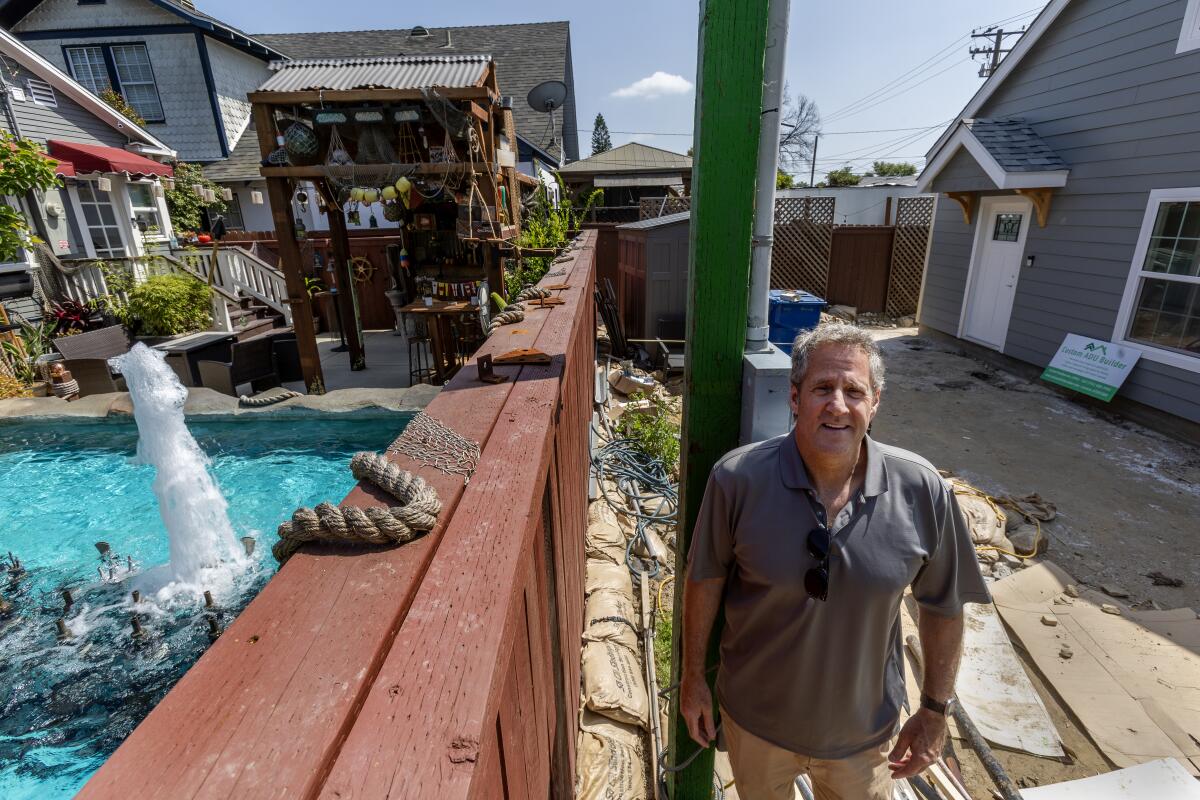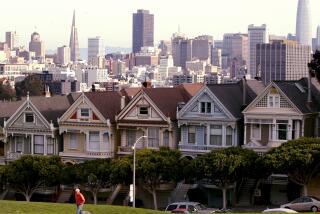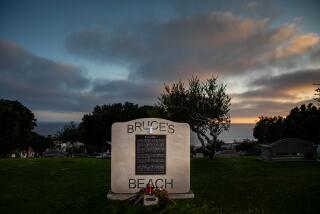As court overturns a lot-splitting law, SB 9, one early adopter asks why

Sam Andreano is currently putting the finishing touches on his split-lot property in Whittier. He’s a guinea pig for state Senate Bill 9, a housing law that allows homeowners to divvy up their properties and build two or even four units on a once-single-family lot.
Andreano, 59, was one of SB 9’s earliest adopters. He bought a single-family home for $790,000 in 2021, split the property in half and sold the existing home on half of the original lot for $777,777 in 2023 — essentially coming out with an empty lot for a little over $12,000, around what it would have cost in the 1970s.
Then, Andreano spent around $400,000 building a home onto the back half of the original lot. He estimates it’ll be worth around $850,000 when it’s finished next month.
The project was an absolute success; Andreano added density to a single-family lot and came out well financially.
That’s why he was so shocked when an L.A. County judge struck down the law last month.
Superior Court Judge Curtis Kin determined that SB 9 is unconstitutional because it doesn’t provide housing restricted for low-income residents, which he said was the law’s stated purpose. For now, it affects five cities: Redondo Beach, Carson, Torrance, Whittier and Del Mar. But the ruling clears the way for the law — one of many designed to alleviate California’s housing crisis — to be invalidated in cities across the state.
Few took advantage of the law, especially compared with other state laws created to increase density. A study from Bay Area NPR affiliate KQED-FM found that 16 California cities — including San José, San Francisco, Long Beach and Sacramento — approved just 75 split-lot applications and 112 applications for new units under SB 9 from 2022 to 2023, while approving 8,800 accessory dwelling units during the same stretch.
Andreano thinks he knows why. He said some property owners he spoke to were hesitant to build SB 9 projects because they were afraid it would be overturned, and now their fears have come true. His project is fine because the property has already been divided, but he said others still applying will surely lose money due to the ruling.
“You have to pay the architect, the engineer and others. Then the ruling comes down saying it’s overturned, and you’re out $50,000,” he said.
Andreano was able to push his project through before the court decision because he moved quickly. He bought the Whittier property in December 2021 with the intention to split it up under SB 9 and officially started his application four months later.
The process took two years, hundreds of phone calls and tens of thousands of dollars.
The law allows a single-family-zoned lot to be split into two, and owners can build either a single-family home or a duplex on each lot, for a total of up to four units. But it requires the two lots to be split somewhat evenly, with a maximum difference of 60-40, and also requires each new lot to be at least 1,200 square feet.
Under these restrictions, the ideal properties for SB 9 are big lots with small houses. So Andreano specifically bought a property that would work well under the guidelines: a 1,200-square-foot house on a 6,232-square-foot lot. Big(ish) lot, small house.
He had to file two applications: one with the L.A. County Department of Regional Planning, and one with the Whittier Public Works Department. He addressed easements, sewer lines, power lines, where water would flow when it rains, etc.
Then he brought in an architect, which cost about $20,000; a grading engineer, which cost around $15,000; a soil engineer, which cost around $8,000; and a surveyor, which cost around $5,000. The L.A. County Fire Department did three inspections, which cost around $1,500 each, and he also spent around $3,000 on application fees.
“It was a lot of back-and-forth,” he said. “I’d submit my application, and the city would ask for revisions on A, B and C. Then I’d submit the revisions, and they’d ask for revisions on D, E and F.”
He’s in the final stages of finishing the back house, bringing the timeline of the project to roughly two years. He said it’s definitely been worth it.
The property now features two single-family homes separated by a fence: a 1,200-square-foot front house with three bedrooms and 1.5 bathrooms on a 3,349-square-foot lot, and an 1,100-square-foot back house with three bedrooms and two bathrooms on a 2,893-square-foot lot, where he plans to live. The lot-size split is 53.65% to 46.35%, well within the 60-40 restrictions.
“People want to buy houses, and this is a way to increase density while also letting people work out the details on their own,” he said.
Andreano hired Dennis Robinson, owner of Custom ADU Builder, to build the back house. Robinson has constructed seven SB 9 projects, and he’s completing seven more.
Robinson handles both ADUs and SB 9 projects and said each type has it own perks.
“ADUs are faster and cheaper, and you save around $20,000 in the permitting process alone,” he said. “But if you want to add multiple units to your property, SB 9 is better.”
Robinson was surprised when the law was overturned. He was about to break ground on a project in Long Beach, where a family wanted to expand its garage into a 1,000-square-foot home and add a unit above, but now it’s in jeopardy.
If the ruling is appealed and upheld, it would expand to affect California’s 121 charter cities, including Long Beach, Los Angeles and San Francisco.
The law was declared unconstitutional on the grounds that it didn’t provide housing for low-income residents, but Andreano said that if he had to sell or rent the home as low-income, he would’ve lost money.
“That affordability factor makes sense for a 100-unit condo, where a developer can set a few units aside for low income, but it doesn’t work for an individual home,” he said. “The goal for SB 9 should be to add housing in order to make the market more affordable in general.”
More to Read
Sign up for Essential California
The most important California stories and recommendations in your inbox every morning.
You may occasionally receive promotional content from the Los Angeles Times.











